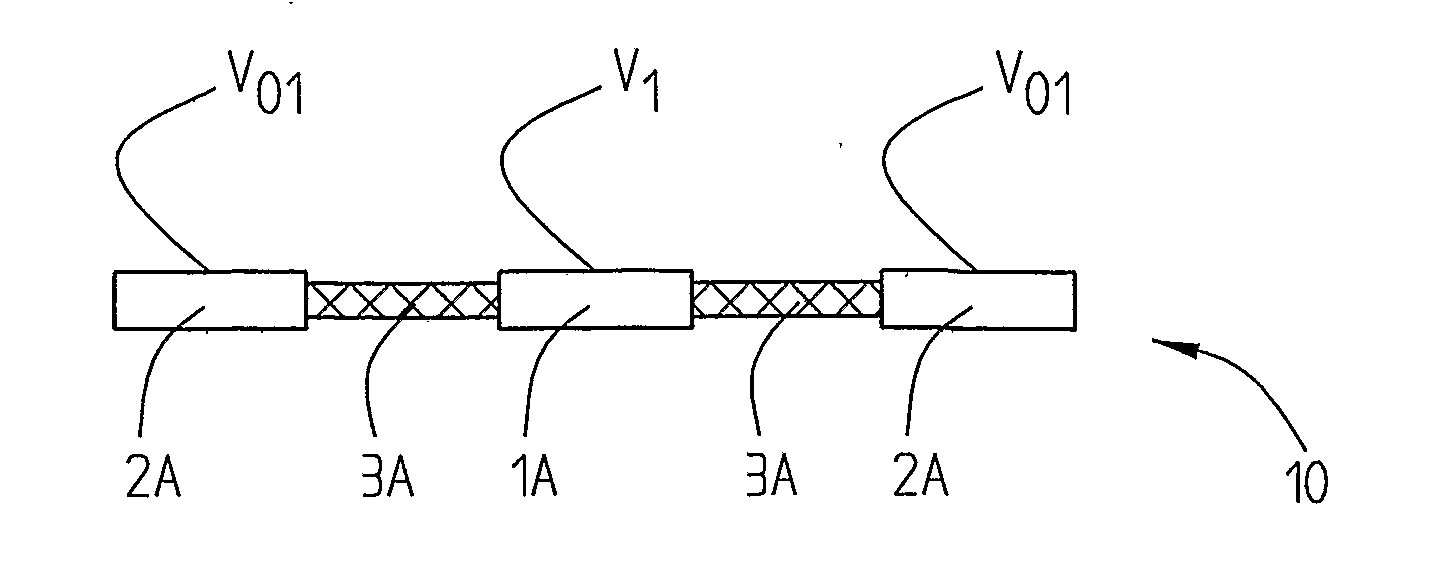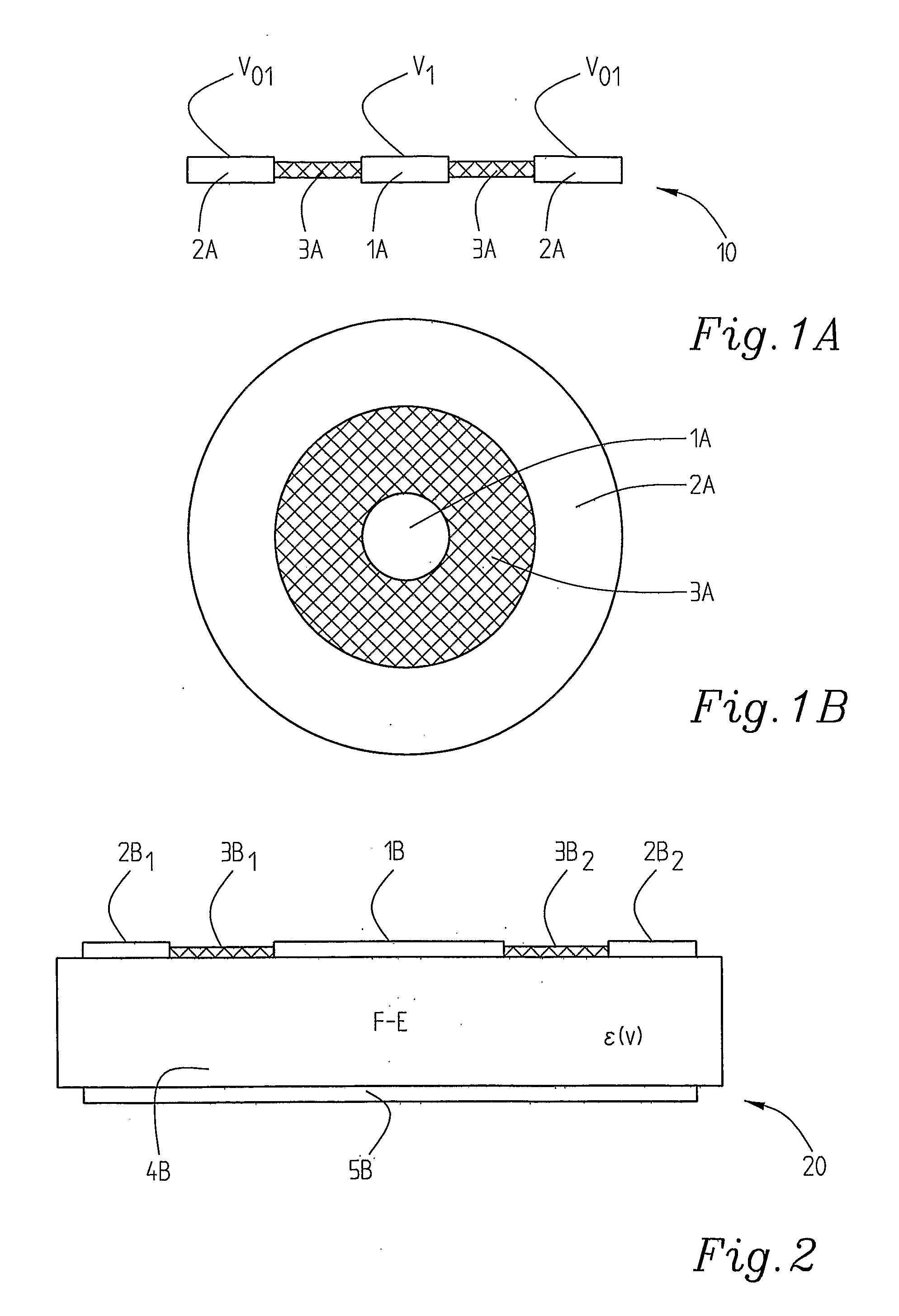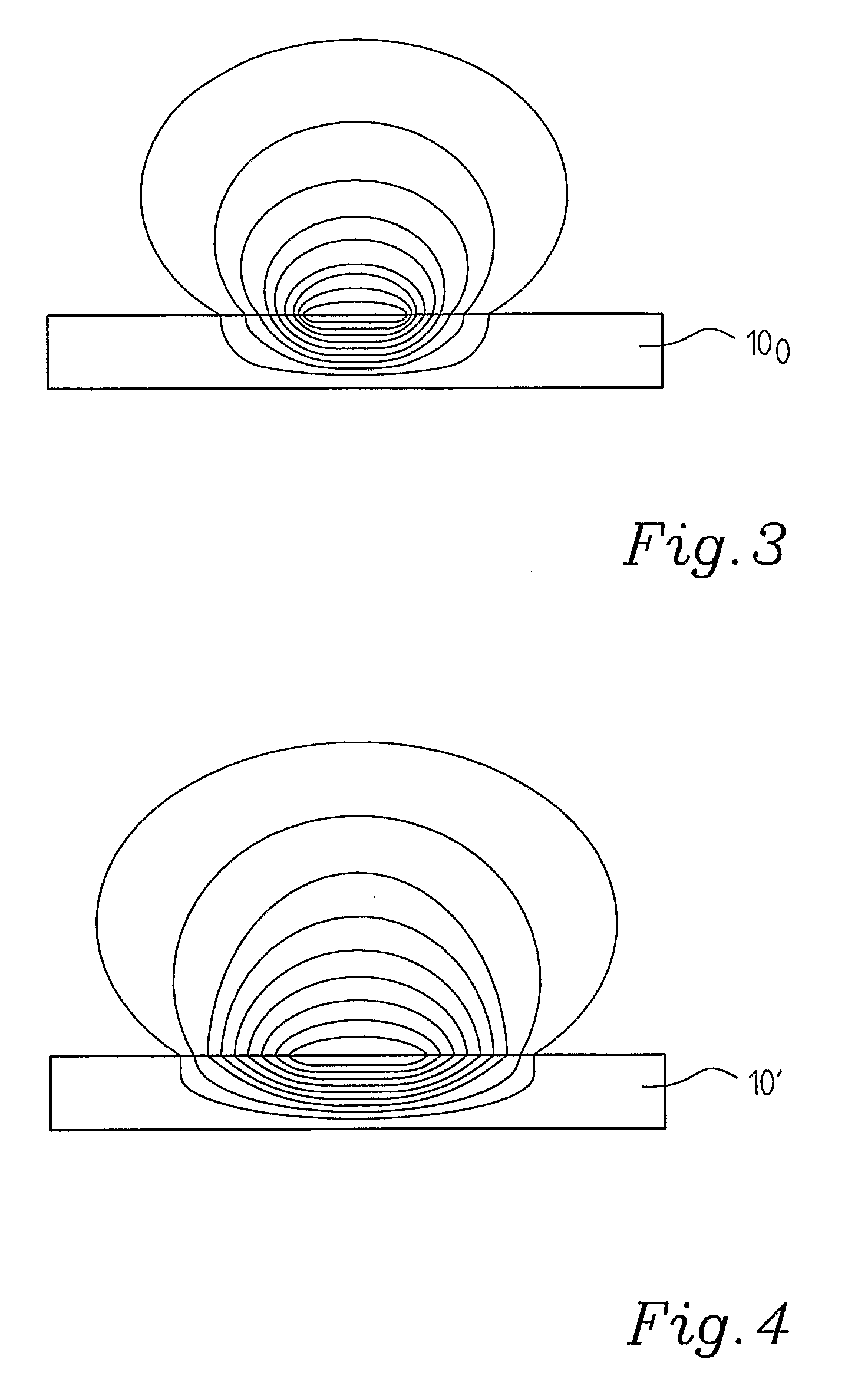Resistive Films for Electrode Peak-Field Suppression
- Summary
- Abstract
- Description
- Claims
- Application Information
AI Technical Summary
Benefits of technology
Problems solved by technology
Method used
Image
Examples
Embodiment Construction
[0042]FIG. 1A shows a basic implementation of the inventive concept with an arrangement 10 in which a circular disk shaped high potential electrode 1A with a potential V1 is surrounded by, here, a ring shaped low potential electrode 2A which here has the potential V01, which for example may be zero V or substantially ground. Between the high potential electrode 1A and the low potential electrode 2A a resistive arrangement 3A is provided. The separation between the high potential electrode and the low potential electrode should at least be such as to prevent dielectric breakdown in the air (about 3-5 kV / mm) supposing that the field is “evened out” due to the resistive arrangement. If silicon encapsulation additionally is implemented, the distance may be reduced e.g. about 2-5 times, the other materials hence forming the limiting factor.
[0043]In other embodiments, as will be described further below, low potential electrodes may be provided also on only one side of a high potential ele...
PUM
 Login to View More
Login to View More Abstract
Description
Claims
Application Information
 Login to View More
Login to View More - R&D
- Intellectual Property
- Life Sciences
- Materials
- Tech Scout
- Unparalleled Data Quality
- Higher Quality Content
- 60% Fewer Hallucinations
Browse by: Latest US Patents, China's latest patents, Technical Efficacy Thesaurus, Application Domain, Technology Topic, Popular Technical Reports.
© 2025 PatSnap. All rights reserved.Legal|Privacy policy|Modern Slavery Act Transparency Statement|Sitemap|About US| Contact US: help@patsnap.com



